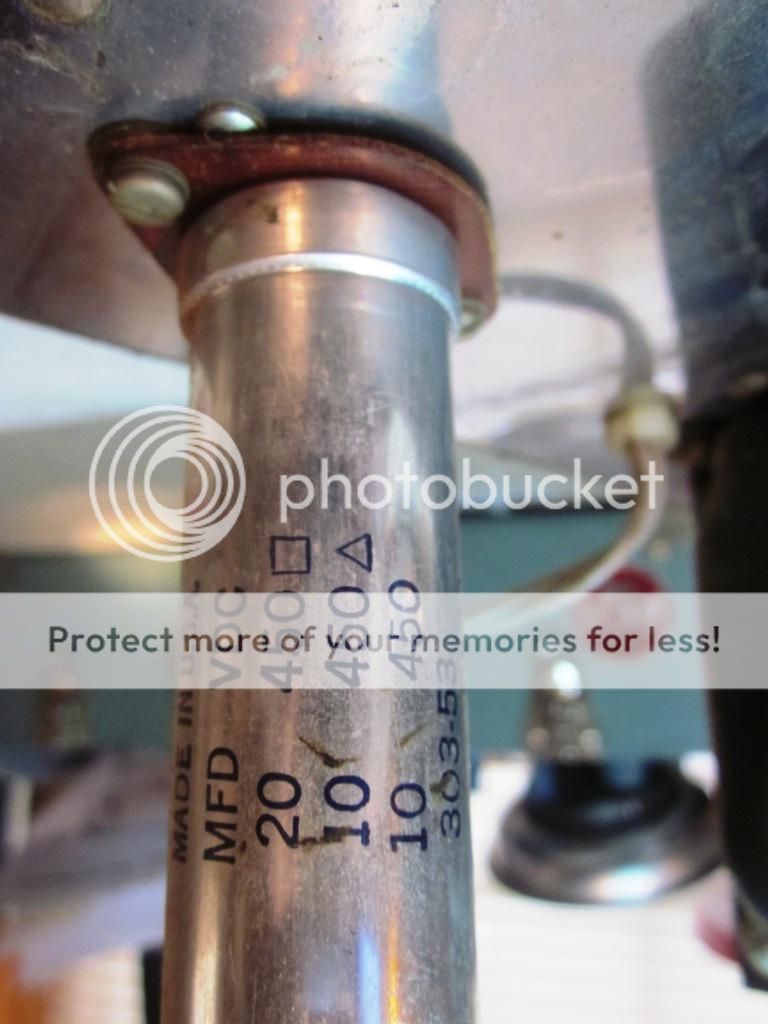Have a bone stock 1962 Supro Model 1624 and am trying to source a direct replacement for the stock Mallory 20/10/10 @ 450 cap can. There really isn't all that much room inside the chassis to put a terminal strip and individual caps.
The problem I'm running into is the diameter of the can. The stock can is 1" in diameter and the replacements I'm finding are all 1 3/8" and I am dead set against making the hole larger to accommodate the currently available cap cans. The amp has never been touched and all it needs is the replacement cap can and the two 35/50s.
Open to any ideas that'll help preserve this beauty the way it is now.


The problem I'm running into is the diameter of the can. The stock can is 1" in diameter and the replacements I'm finding are all 1 3/8" and I am dead set against making the hole larger to accommodate the currently available cap cans. The amp has never been touched and all it needs is the replacement cap can and the two 35/50s.
Open to any ideas that'll help preserve this beauty the way it is now.


Comment